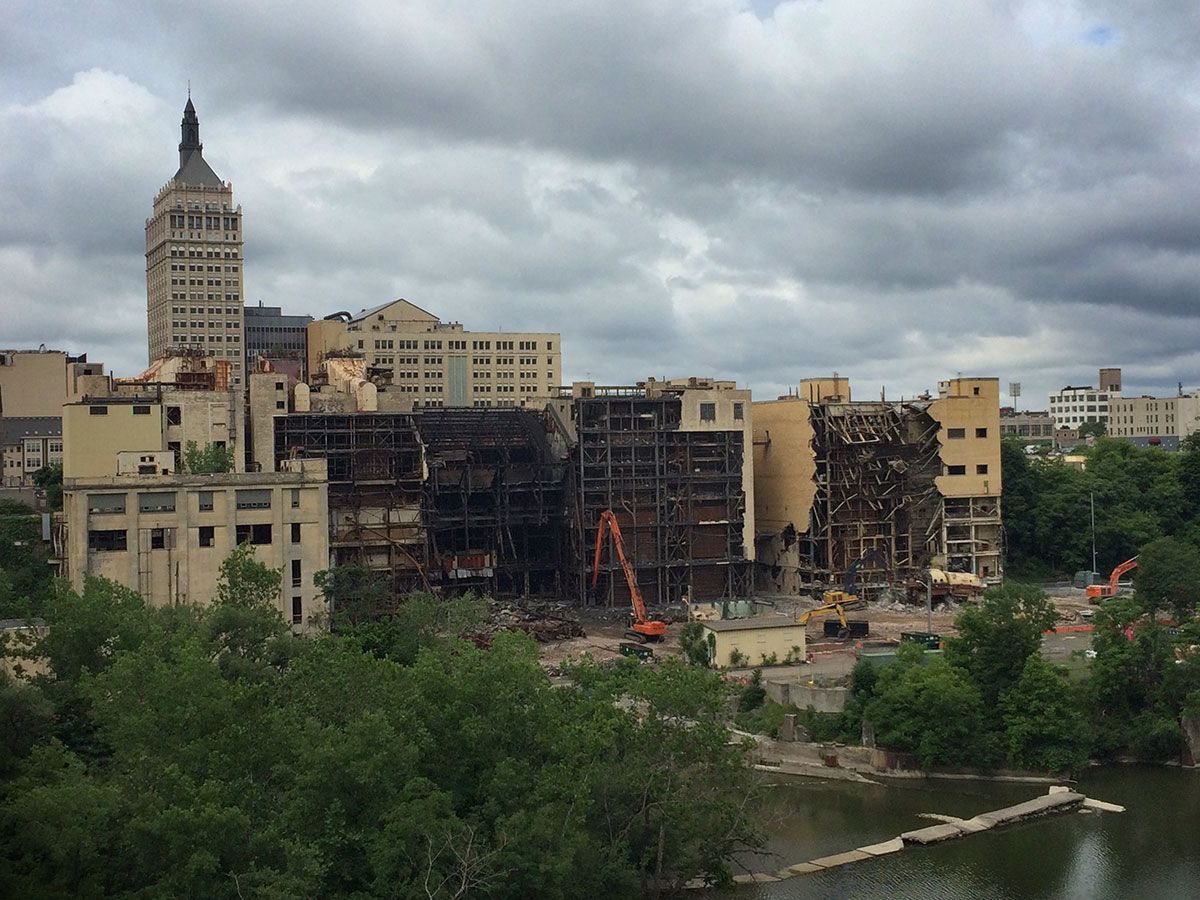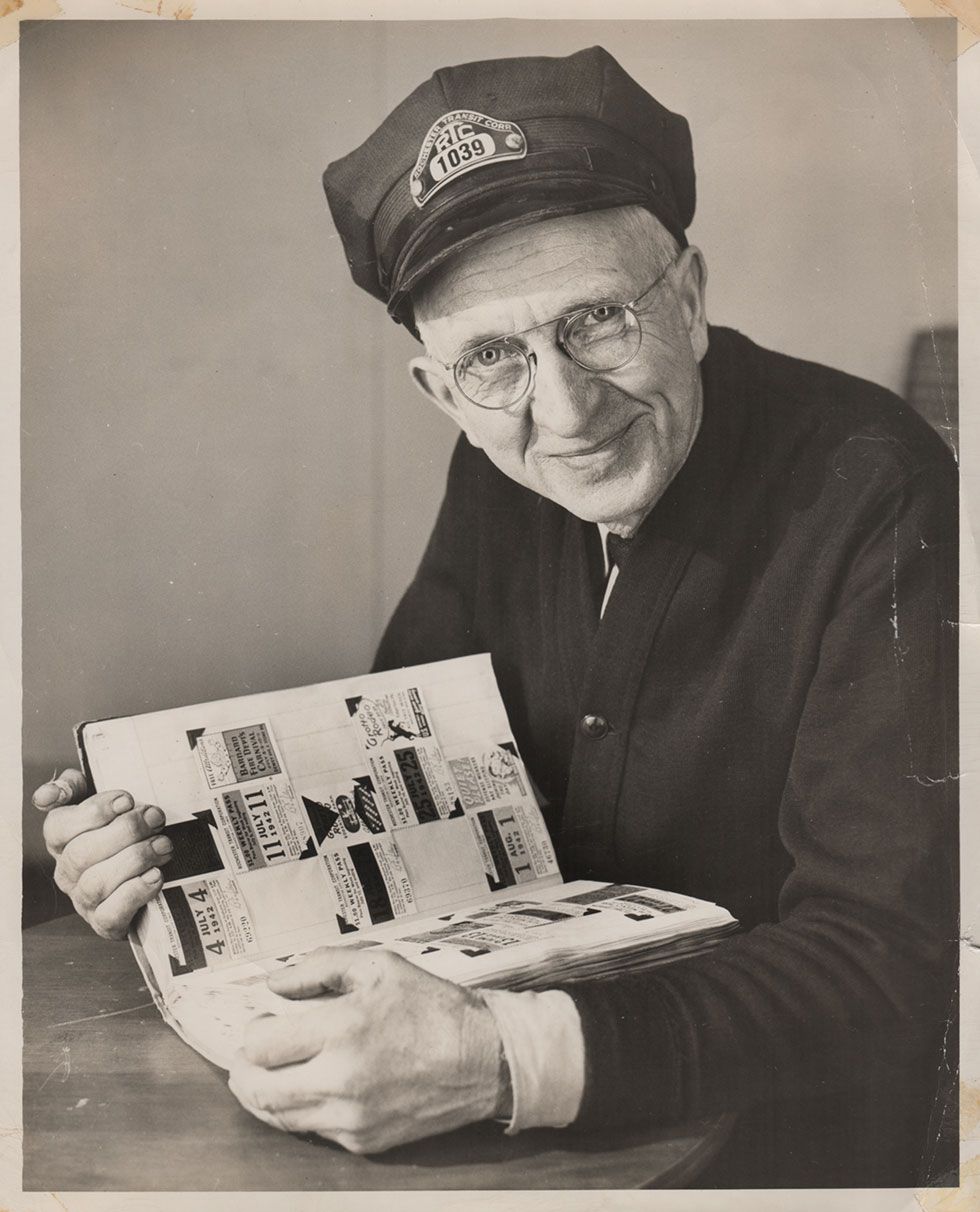This article was scraped from Rochester Subway. This is a blog about Rochester history and urbanism has not been published since 2017. The current owners are now publishing link spam which made me want to preserve this history.. The original article was published August 30, 2016 and can be found here.
![RG&E Beebee power station prior to demolition. Rochester, NY. Summer 2016. [IMAGE: Anonymous]](https://senseofplace.dev/content/images/photos/rochester-rge-beebee-station-00.jpg)
The following is a guest post submitted by an anonymous source. Submit your story today .
RG&E's Beebee power plant was one of the most formidable structures in Rochester. For half a century, this cluster of buildings covered an 8 acre site along the floor of the High Falls gorge - climbing up the west rock wall and looming hundreds of feet in the air over Platt Street and the neighborhood below...
![RG&E Beebee power station prior to demolition. Rochester, NY. Summer 2016. [IMAGE: Anonymous]](https://senseofplace.dev/content/images/photos/rochester-rge-beebee-station-01.jpg)
A plaque affixed to the Platt Street bridge overlooking High Falls and the power station reads:
"In 1889 Rochester was the third city in the country to have a steam heating system, ending much of the smoke nuisance downtown. Citizen's Light and Power Co.'s combined steam and hydroelectric power plant was established in 1892 on Brown's Race and Mill Street. In 1904 Citizen's merged with RG&E.
![RG&E Beebee power station prior to demolition. Rochester, NY. Summer 2016. [IMAGE: Anonymous]](https://senseofplace.dev/content/images/photos/rochester-rge-beebee-station-02.jpg)
As the many mills and machine shops fell into disuse in the 1900s, RG&E gradually acquired this land and expanded its operations, making use of the water from Brown's Race as well as from the Genesee River.
![RG&E Beebee power station prior to demolition. Rochester, NY. Summer 2016. [IMAGE: Anonymous]](https://senseofplace.dev/content/images/photos/rochester-rge-beebee-station-03.jpg)
The Beebee Station, named for RG&E chairman Alexander Beebee, was formally dedicated in 1959."
![RG&E Beebee power station prior to demolition. Rochester, NY. Summer 2016. [IMAGE: Anonymous]](https://senseofplace.dev/content/images/photos/rochester-rge-beebee-station-04.jpg)
Now a relic of our city's twentieth century industrial complex--and a reminder of the energy and infrastructure required to run it--the giant facility has sat dormant since the late 1990s.
![RG&E Beebee power station prior to demolition. Rochester, NY. Summer 2016. [IMAGE: Anonymous]](https://senseofplace.dev/content/images/photos/rochester-rge-beebee-station-05.jpg)
While RG&E briefly entertained the idea of selling the property

to developers, the power company would eventually announce plans for Beebee's elimination.
![RG&E Beebee power station prior to demolition. Rochester, NY. Summer 2016. [IMAGE: Anonymous]](https://senseofplace.dev/content/images/photos/rochester-rge-beebee-station-06.jpg)
This summer while demolition crews were working to dismantle the behemoth, my camera was clicking away inside.
![RG&E Beebee power station prior to demolition. Rochester, NY. Summer 2016. [IMAGE: Anonymous]](https://senseofplace.dev/content/images/photos/rochester-rge-beebee-station-09.jpg)
Most people were still asleep in their homes as I crept into the darkness. The place was startlingly different than any other building I had ever seen. Each section was a large shell, filled with five or six levels of catwalks twisting and turning around a maze of machinery.
![RG&E Beebee power station prior to demolition. Rochester, NY. Summer 2016. [IMAGE: Anonymous]](https://senseofplace.dev/content/images/photos/rochester-rge-beebee-station-21.jpg)
The building must have been added to in stages. Floors didn't always line up to the next section and odd corridors filled the spaces in between. It was darker than dark and windows didn't offer much help. I had no idea how to get around. The sound of birds early in the morning echoed inside the empty rooms.
![RG&E Beebee power station prior to demolition. Rochester, NY. Summer 2016. [IMAGE: Anonymous]](https://senseofplace.dev/content/images/photos/rochester-rge-beebee-station-18.jpg)
I remember standing in what I thought was a pretty large generation room, only to walk across a narrow catwalk to find myself inside an even larger one. As my eyes adjusted to the dark, the enormity of the space filled me with awe. I was staring into the middle of a 6-story steel cavern.
![RG&E Beebee power station prior to demolition. Rochester, NY. Summer 2016. [IMAGE: Anonymous]](https://senseofplace.dev/content/images/photos/rochester-rge-beebee-station-11.jpg)
I made my way down the first stairway I could find until I reached the bottom-most level (inline with the floor of the river gorge).
![RG&E Beebee power station prior to demolition. Rochester, NY. Summer 2016. [IMAGE: Anonymous]](https://senseofplace.dev/content/images/photos/rochester-rge-beebee-station-12.jpg)
![RG&E Beebee power station prior to demolition. Rochester, NY. Summer 2016. [IMAGE: Anonymous]](https://senseofplace.dev/content/images/photos/rochester-rge-beebee-station-19.jpg)
Large generating machines stood silent as a grey light started pouring in from the rainy morning. I had never been in such a structure. I tried to imagine what it must have felt like when all of the machines were humming, and the large megawatt gauge on the wall was moving.
![RG&E Beebee power station prior to demolition. Rochester, NY. Summer 2016. [IMAGE: Anonymous]](https://senseofplace.dev/content/images/photos/rochester-rge-beebee-station-17.jpg)
That was all for that trip, I needed to leave before the morning crew arrived. When I returned days later I went to see that space again, only to find as I crossed the catwalk and made the turn, that the door I needed to open was gone. In its place, a sharp 5-story drop. This entire section of the building was gone.
![RG&E Beebee power station prior to demolition. Rochester, NY. Summer 2016. [IMAGE: Anonymous]](https://senseofplace.dev/content/images/photos/rochester-rge-beebee-station-07.jpg)
I made my way, with a dim flashlight, to the other main generating room, most likely added around the 1950s or around there. The buildings weren't actually connected, just a covered catwalk out and around provided access to this newer section.
![RG&E Beebee power station prior to demolition. Rochester, NY. Summer 2016. [IMAGE: Anonymous]](https://senseofplace.dev/content/images/photos/rochester-rge-beebee-station-22.jpg)
The catwalks continued like in the other parts of the building. Stretching high above and down below into the darkness. I finally came across another opening and headed down the metal stairs to the main level to get a photo of today's sunrise being filtered through the hazy translucent glass.
![RG&E Beebee power station prior to demolition. Rochester, NY. Summer 2016. [IMAGE: Anonymous]](https://senseofplace.dev/content/images/photos/rochester-rge-beebee-station-10.jpg)
I came across an old main control panel, since disconnected and moved for the demolition. This was where so many people had stood watch, monitoring the station, providing the city with electricity and keeping workers safe. Demolition of this section would start the next day.
![RG&E Beebee power station prior to demolition. Rochester, NY. Summer 2016. [IMAGE: Anonymous]](https://senseofplace.dev/content/images/photos/rochester-rge-beebee-station-08.jpg)
My last visit came on a warm clear morning. I found myself in a part of the plant I knew quite well. There were still corners I hadn't seen before. Knowing this would probably be my last trip before demolition came for the rest of the building, I tried to see as much as I could. I stumbled across an old locker room that was tucked away in one of the basements. Bars were across the windows, now with vegetation creeping in.
![RG&E Beebee power station prior to demolition. Rochester, NY. Summer 2016. [IMAGE: Anonymous]](https://senseofplace.dev/content/images/photos/rochester-rge-beebee-station-25.jpg)
I decided to try one other room before calling it a day. It was secluded from the rest, and the only entrance required you to walk outside on a balcony built into the edge of the gorge. It looked as though this was a storage room, or archive room. The shelves were mostly empty minus a few books, and a file cabinet full of microfilm, documenting data from the 70s up until the plant's closure.
One item stood out to me...
![RG&E Beebee power station prior to demolition. Rochester, NY. Summer 2016. [IMAGE: Anonymous]](https://senseofplace.dev/content/images/photos/rochester-rge-beebee-station-26.jpg)
A handwritten record book for different parts of the plant showing daily electrical outputs and efficiencies to various parts of the city.
![RG&E Beebee power station prior to demolition. Rochester, NY. Summer 2016. [IMAGE: Anonymous]](https://senseofplace.dev/content/images/photos/rochester-rge-beebee-station-27.jpg)
It was amazing to see this simply left behind. I assume that anything of necessity was taken, but why this book was left I'll never know.
![RG&E Beebee power station prior to demolition. Rochester, NY. Summer 2016. [IMAGE: Anonymous]](https://senseofplace.dev/content/images/photos/rochester-rge-beebee-station-24.jpg)
The rest of the room was filled with broken glass, computer monitors, and old manuals to equipment that was long gone.
![RG&E Beebee power station prior to demolition. Rochester, NY. Summer 2016. [IMAGE: Anonymous]](https://senseofplace.dev/content/images/photos/rochester-rge-beebee-station-23.jpg)
I left that day knowing I had covered most of the structure, and that soon the whole thing would be gone and something else created in its place.
![RG&E Beebee power station prior to demolition. Rochester, NY. Summer 2016. [IMAGE: Anonymous]](https://senseofplace.dev/content/images/photos/rochester-rge-beebee-station-20.jpg)
Watching from the Pont de Rennes, passerbys could see all the twisted metal and catwalks they wanted. Bricks lay in piles, and the spaces they once formed now are only a memory.
![RG&E Beebee power station prior to demolition. Rochester, NY. Summer 2016. [IMAGE: Anonymous]](https://senseofplace.dev/content/images/photos/rochester-rge-beebee-station-13.jpg)
By the time of this posting, all of this will be history in every sense of the word. Demolition and clean up will be completed in the coming weeks and new grass will be growing here next spring.
![RG&E Beebee power station prior to demolition. Rochester, NY. Summer 2016. [IMAGE: Anonymous]](https://senseofplace.dev/content/images/photos/rochester-rge-beebee-station-30.jpg)
For dust thou art, and unto dust shalt thou return. * * *


